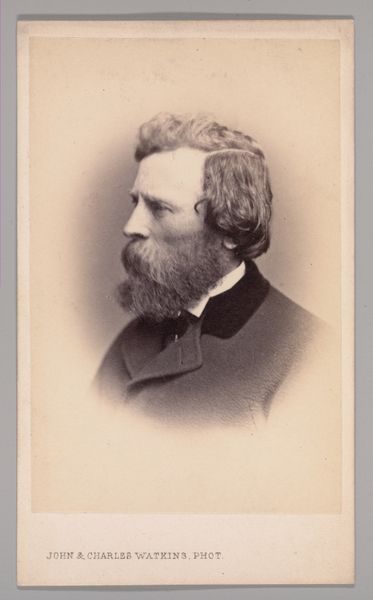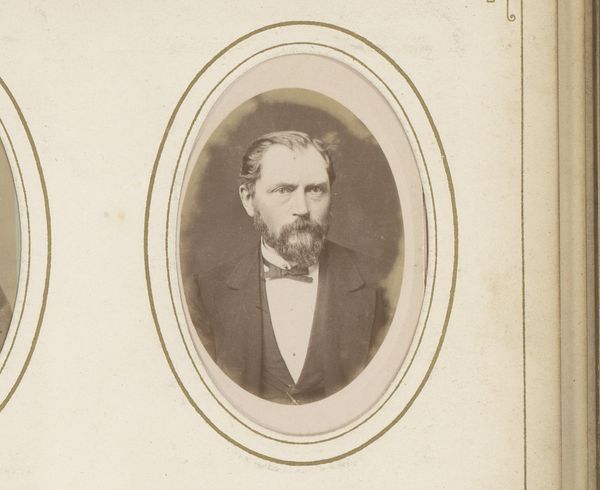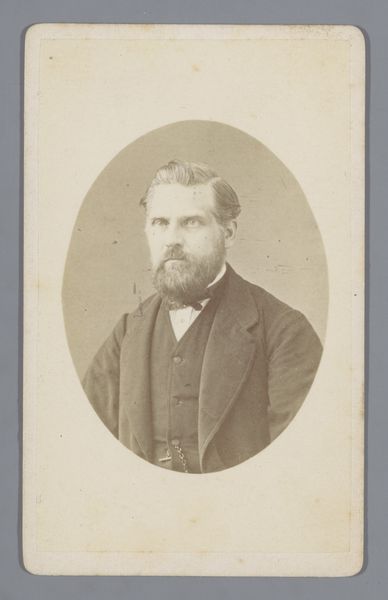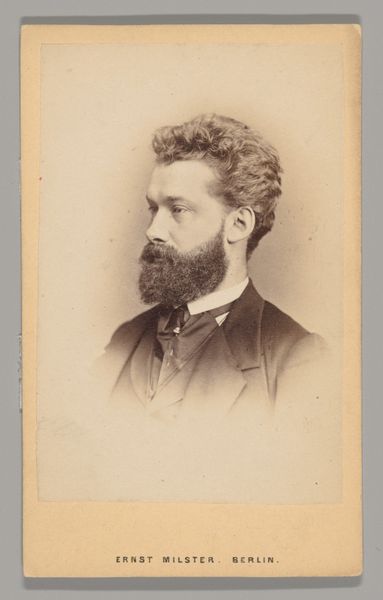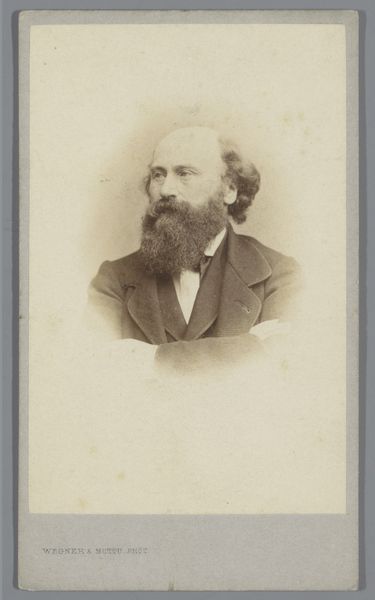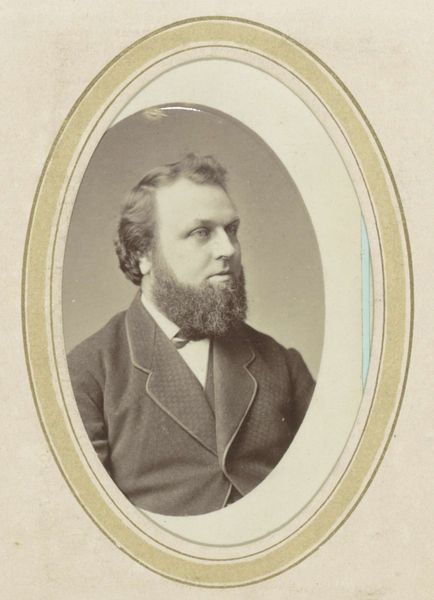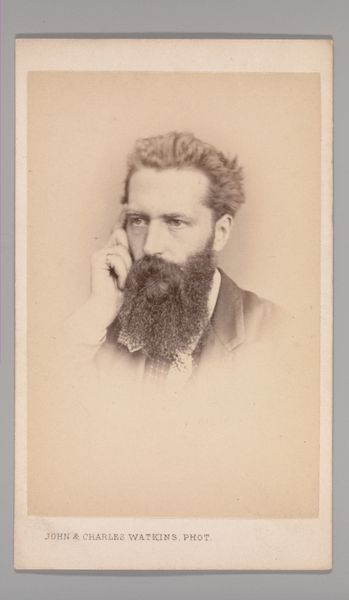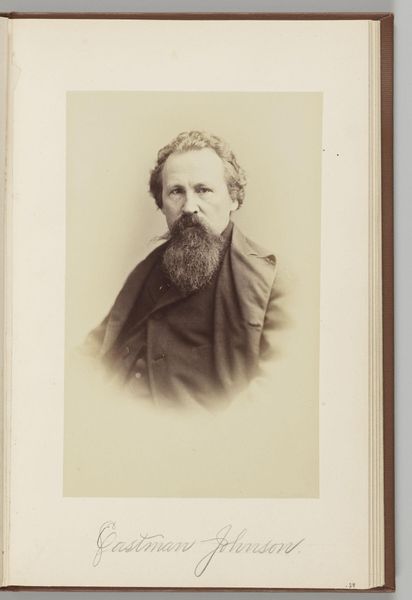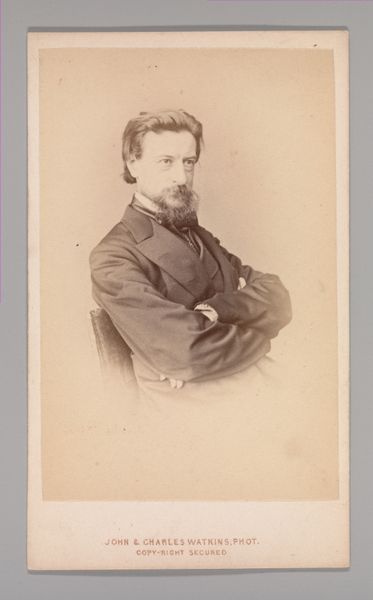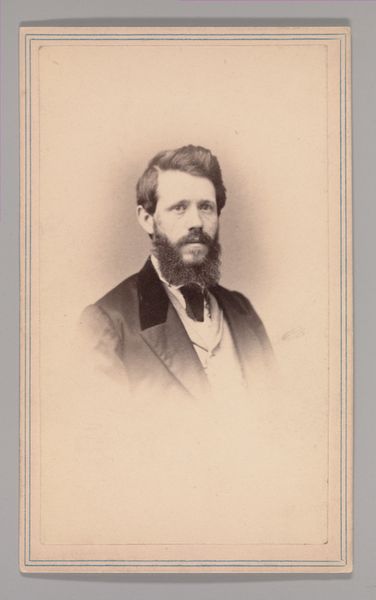
photography
#
portrait
#
caricature
#
photography
#
genre-painting
Dimensions: height 138 mm, width 98 mm
Copyright: Rijks Museum: Open Domain
Editor: This is a striking photographic portrait from between 1870 and 1900, titled "Portret van een man" by Emile Schweitzer. The sepia tones and slightly blurred edges give it such an aged, almost dreamlike quality. What do you see in this piece, from your perspective? Curator: The power here lies in the collective memory of portraiture itself. It evokes notions of social status, the burgeoning middle class eager to mimic aristocratic portraiture traditions. What is this man trying to communicate through the trappings of dress and posed gaze? Consider the beard – a Victorian signifier of masculinity, intellect, perhaps even worldliness. But the soft focus... it suggests a certain vulnerability too, doesn't it? A desire to be seen in a specific, idealized way. Editor: That’s a really interesting point. I was thinking it was a pretty straightforward portrait. Is the very act of photographing oneself and crafting an image always an attempt at myth-making? Curator: Indeed! We can trace such conscious manipulation of image back centuries. Every element, from the tie knot to the coiffed hair, becomes symbolic. Schweitzer is not just capturing a likeness, but encoding a specific message intended for posterity. This image speaks to our persistent need to control how we are perceived. Even now, in the age of social media filters, don’t you think? Editor: I suppose you're right. Even filtered selfies are a form of carefully constructed storytelling. Thanks, that really makes me think about the history and future of portraiture differently. Curator: The persistence of such motifs highlights how deeply ingrained these desires for self-representation truly are. And hopefully prompts deeper inquiry into whose stories get told.
Comments
No comments
Be the first to comment and join the conversation on the ultimate creative platform.
